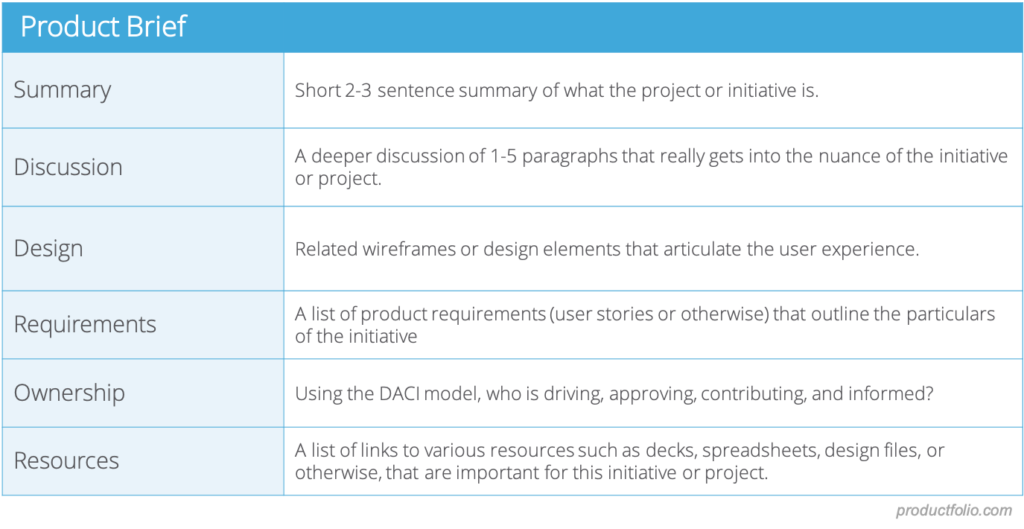Product Brief Template
A product brief is a very useful tool for product development teams and leadership alike, to understand where a new product of feature is going. It defines the attributes, goals, and direction of the product. Although some people also call it product specifications, a ‘brief’ is a better description of the modern approach of writing loose 1-pagers that guide teams in their pursuits to solve problems, rather than traditional PRDs that specified every excruciating detail that teams had to implement.

A good template, such as the one we provided here, should help you make the process of creating an effective product brief seamless.
What a Product Brief Is and Is Not
After highlighting the major projects or initiatives on your roadmap, it is helpful to create a brief for every item on the document. These are more specifically items on epic or larger levels – those that last about three months. The product brief defines the product and its importance while also serving as a reference point to guide work.
This document is concerned more with the “what and why” of the product and less with the how. It represents an agreement in the cross-functional team and with other key stakeholders, which is good for alignment. By contrast, a product brief does not specific the details of a solution, not imply a commitment to deliver something.
An Effective Product Brief Template
There is a good framework from author and product leader, Neal Cabage, that provided a structure for writing a product brief. You may find this especially perfect for coming up with a one-pager that still gets the job done.
This template has the following components:
- Summary
- Discussion
- Design
- Requirements
- Ownership
- Resources
Let’s briefly describe what each of the sections is about:
Summary – Here you summarize what the initiative or project in focus is all about. This should ideally not be longer than a paragraph. It aims to provide a quick summary for someone who may be scanning a lot of documents and trying to decide whether they want to read deeper.
Discussion – You provide more details about the initiative here – this is where you’d answer the 4Ws (What, Why, Where, Who). What problem are you trying to solve and how does the initiative help in this regard? What are the use cases and how does the project align with the strategic goals? Describe why you think it would excite users and other stakeholders. This section should be kept within five paragraphs in length.
Design – If there are design artifacts, this is where you’d generally include these. Include wireframes, flow diagrams, or other design elements to convey key information more easily. Use this to give an idea of the user experience.
Requirements – Draw up a list of requirements that summarize the particulars of the project or initiative. What are the minimum high-level requirements that are necessary to reduce risks? This doesn’t need to be every nauseating detail and user story, rather just the broad-stroke outline of the high-level requirements that provide a sketch of the product. Remember, you don’t want to dis-enfranchise your team from solution design, by being overly-prescriptive.
Ownership – Influenced by the DACI framework, this section is where you describe who owns or does what. Who is driving, approving, contributing, or informed? Specific roles need to be assigned to different team members.
Resources – In this section, you provide links to key external resources, including requirements documentation, design files, decks, and any other that are related to the initiative.
Keep it Short and Simple
The above template is obviously geared toward creating a product brief that isn’t too long. That should be your goal. Even if you don’t end up with a one-pager, two or three pages may not be excessive. Limit the amount of background information that you provide. Only include what is essential and avoid complex language. Use specific, clear words to make the document easier to read and understand to keep everyone on the same wavelength.


